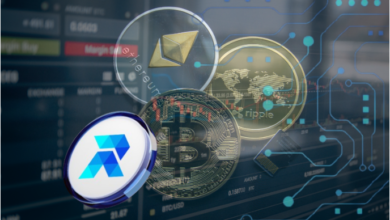The Comprehensive Guide to VPNs and Digital Rights Management

In the digital age, the protection and management of intellectual property have become critical concerns for content creators, distributors, and consumers.
Digital Rights Management (DRM) is a set of technologies and practices aimed at safeguarding digital content and ensuring that it is used in compliance with copyright laws and licenses.
While DRM serves a legitimate purpose, it can also have implications for users’ privacy and access to content.
This comprehensive guide explores the relationship between Virtual Private Networks (VPNs) and DRM, shedding light on how VPNs can influence the way digital content is accessed, protected, and consumed. The aim is to provide you with all the knowledge for you to decide what the best VPN for 2024 is so you can make informed decisions.
Understanding Digital Rights Management (DRM)
DRM in a Nutshell
DRM refers to the technology and strategies used by copyright holders to control access to and use of digital content, such as movies, music, e-books, and software.
It can involve encryption, licensing agreements, and access restrictions.
The Goals of DRM
DRM primarily aims to protect intellectual property by preventing unauthorized copying, distribution, and use of digital content.
It also enables content providers to enforce licensing terms and generate revenue from their products.
DRM and User Experience
While DRM serves content creators and distributors, it can sometimes inconvenience users.
DRM restrictions may limit the number of devices on which content can be played, hinder interoperability, and require constant internet connectivity for verification.
VPNs and DRM
VPNs introduce an additional layer of complexity to the DRM landscape, influencing both content access and user privacy:
1. Bypassing Regional Restrictions
VPNs can be used to bypass geo-restrictions imposed by content providers. By connecting to a VPN server in a different location, users can access digital content that is otherwise unavailable in their region.
2. Enhancing Privacy
VPNs encrypt users’ internet traffic, making it challenging for ISPs and content providers to monitor online activities. This enhanced privacy can offer some protection against DRM-related tracking.
3. Overcoming Bandwidth Throttling
Some ISPs throttle internet speeds when streaming content from certain sources. VPNs can help users circumvent such throttling, leading to a smoother streaming experience.

The Impact of VPNs on DRM Practices
VPNs have influenced DRM practices and the strategies employed by content providers:
Strengthening Regional Controls
In response to VPN use for geo-dodging, content providers have implemented more robust regional controls to enforce licensing agreements.
VPN users may find it increasingly challenging to access region-locked content.
Shifting Enforcement Strategies
Content providers are adopting more sophisticated methods to detect VPN usage and enforce regional restrictions.
This includes blacklisting known VPN server IPs and monitoring for irregularities in traffic patterns.
Balancing User Privacy and Content Protection
The tension between user privacy and content protection continues to evolve.
Some content providers are exploring ways to secure their content without compromising user privacy.
Best Practices for Using VPNs with DRM
To navigate the complexities of VPNs and DRM effectively, consider the following best practices:
Respect Copyright Laws
While VPNs can help you access content from different regions, it’s essential to respect copyright laws and licensing agreements. Only access content for which you have the appropriate rights.
Choose a Reputable VPN Service
Select a good VPN service known for its privacy and security features. Look for services that do not keep logs of user activities and offer strong encryption.
Stay Informed
Keep abreast of changes in DRM policies and enforcement strategies. Some content providers may update their DRM practices in response to evolving technology.
Conclusion
VPNs have introduced both opportunities and challenges in the realm of DRM. While they empower users to access content from around the world and enhance online privacy, they also present challenges for content providers striving to protect their intellectual property.
As DRM practices continue to evolve, striking a balance between content protection and user privacy remains a complex and ongoing endeavor.
Staying informed and adhering to copyright laws and licensing agreements are essential for a harmonious coexistence of VPNs and DRM in the digital age.
Frequently Asked Questions (FAQs)
Is it legal to use a VPN to bypass regional restrictions on DRM-protected content?
Using a VPN to access region-locked content may violate the terms of service of content providers, but it may not necessarily be illegal. The legality depends on your local laws and the specific circumstances.
Can content providers detect VPN usage?
Some content providers can detect VPN usage, especially if the VPN service uses known server IPs. However, not all VPN detection methods are foolproof.
How can I protect my privacy while using a VPN with DRM-protected content?
To protect your privacy, choose a VPN service with a no-logs policy, strong encryption, and a reliable kill switch feature. Also, be cautious about the personal information you share online.
Are there VPN services specifically designed for DRM bypassing?
Some VPN services market themselves as suitable for bypassing geo-restrictions, but the effectiveness of any VPN can vary depending on the content provider’s enforcement methods.





